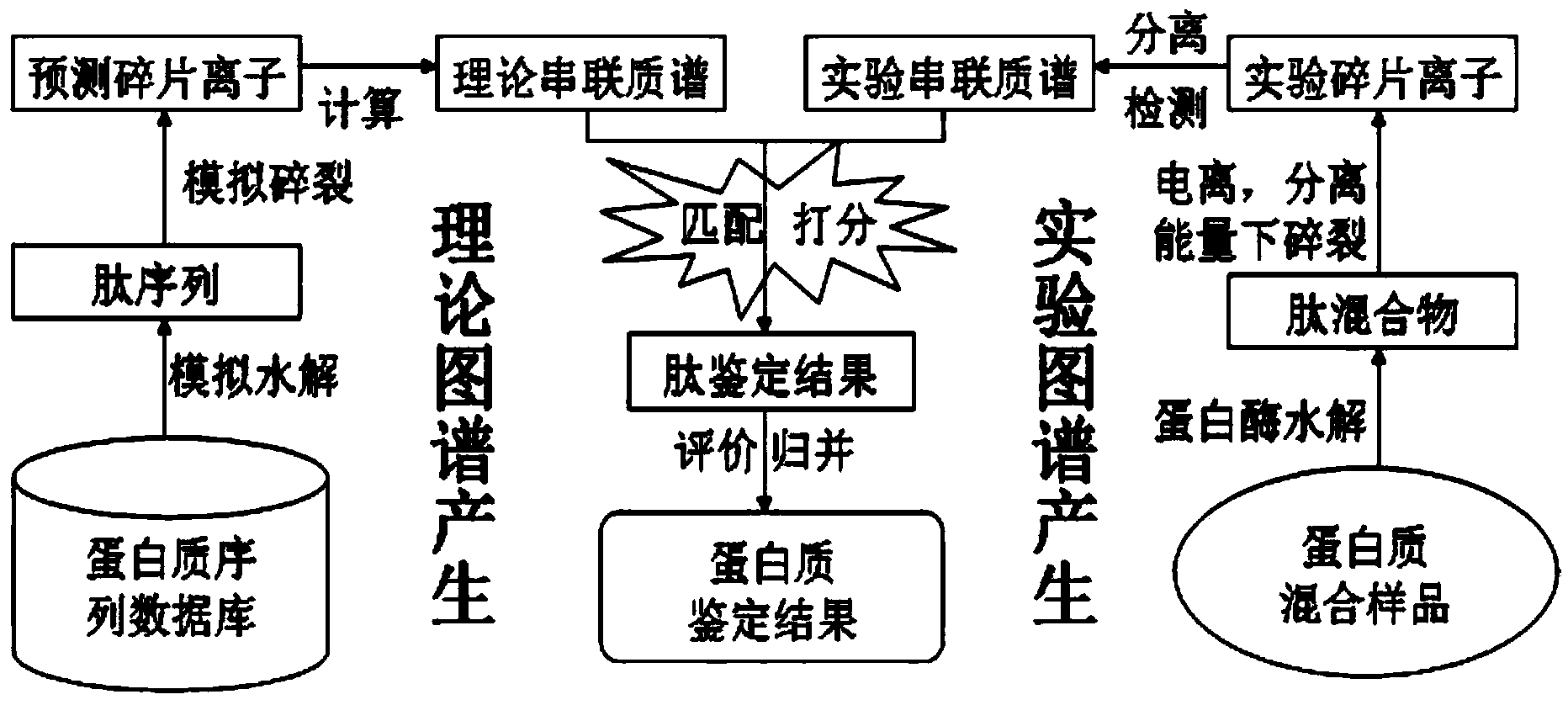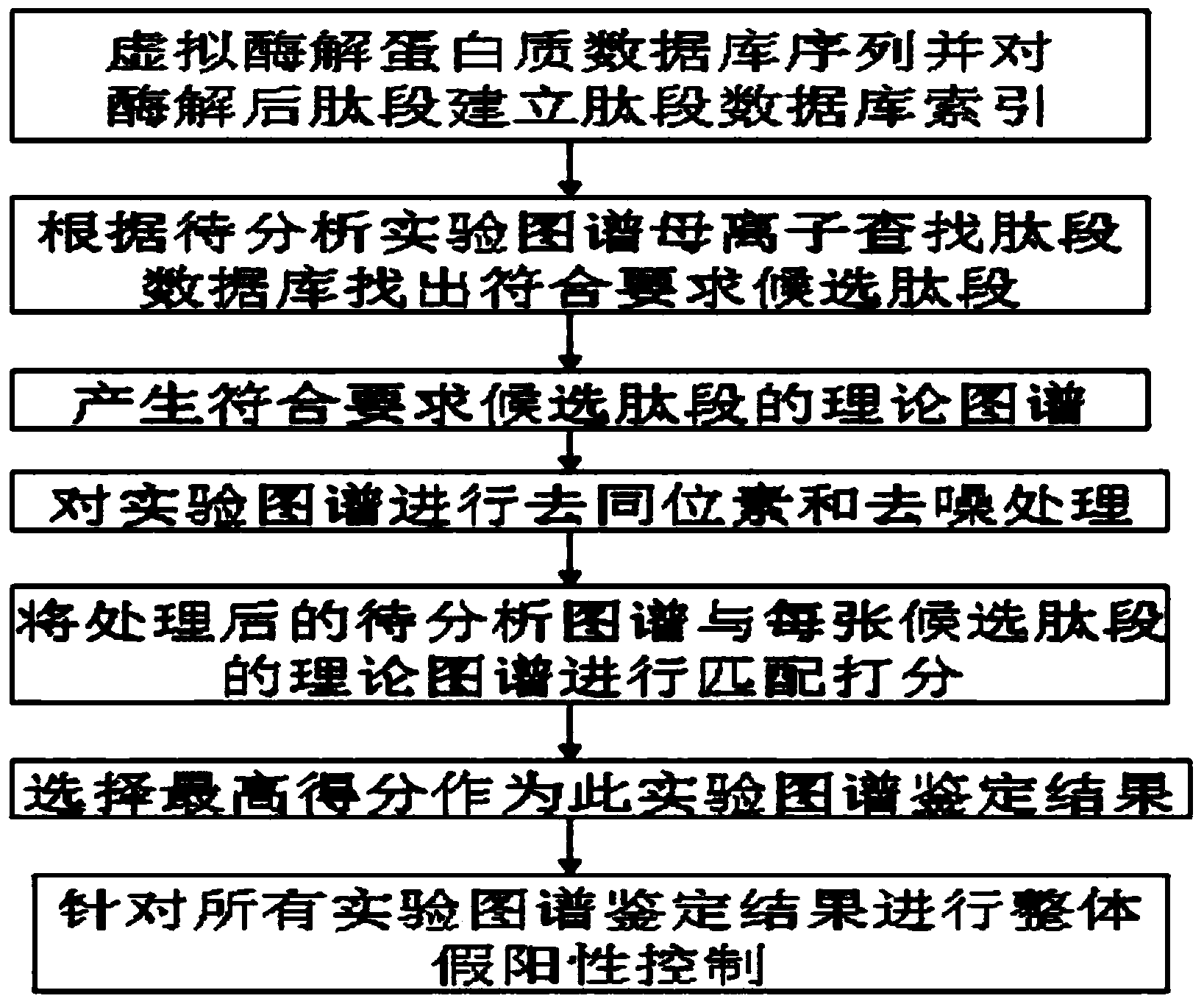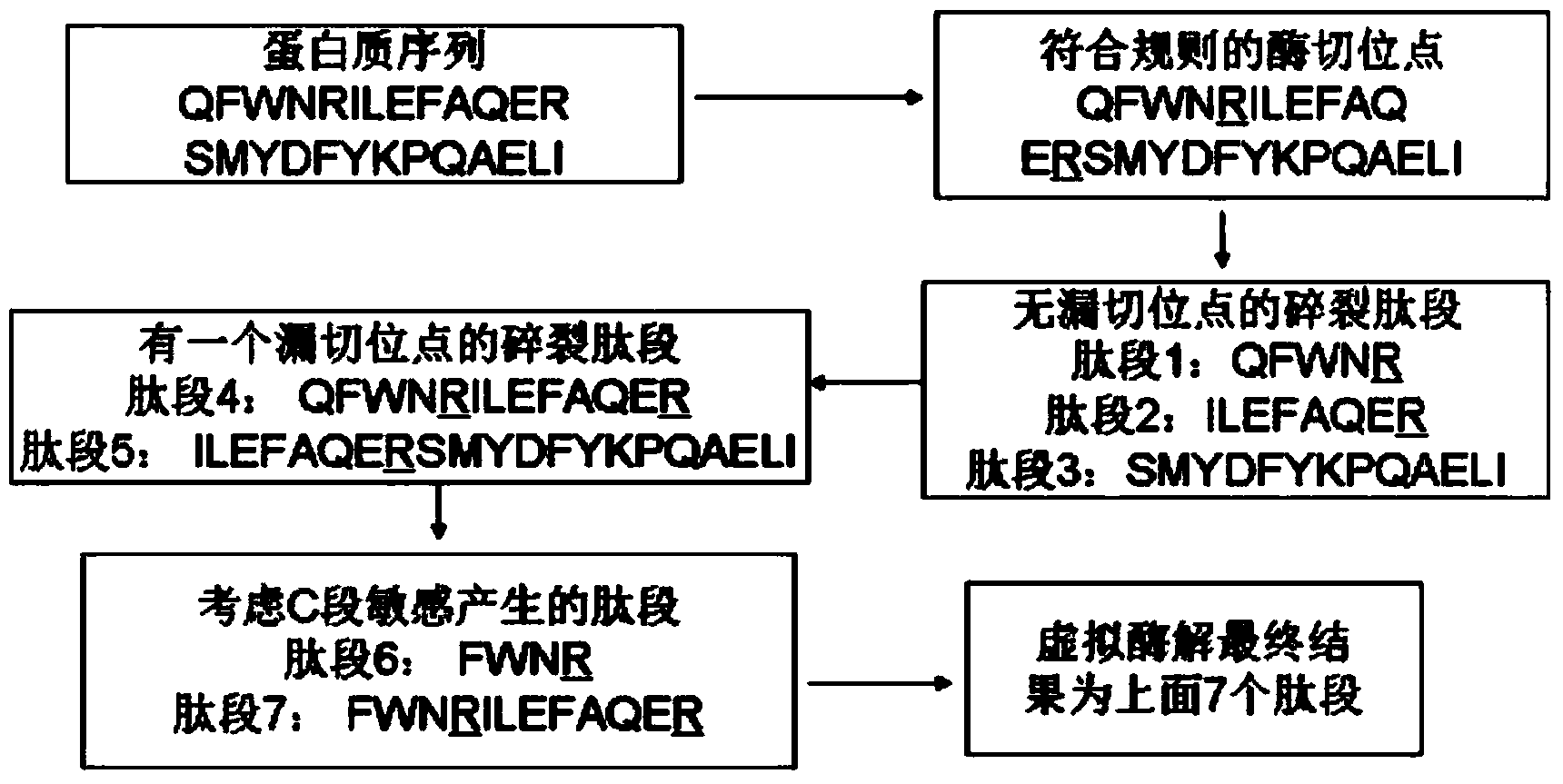Protein second-level mass spectrum identification method based on peak intensity recognition capability
A technology of identification ability and secondary mass spectrometry, applied in the field of protein secondary mass spectrometry identification, can solve the problem that the scoring model does not involve the ability to identify the intensity
- Summary
- Abstract
- Description
- Claims
- Application Information
AI Technical Summary
Problems solved by technology
Method used
Image
Examples
Embodiment Construction
[0073] The present invention will be described in further detail below in conjunction with the embodiments and accompanying drawings.
[0074] A protein secondary mass spectrometry identification method based on intensity recognition ability, comprising the following steps, see figure 2 :
[0075] (1) Virtual enzymolysis protein database sequence, and establish peptide database and peptide database index for the peptide after enzymolysis according to the mass number of the peptide;
[0076] (2) According to the mass number of the parent ion decharged in the experimental spectrum to be analyzed, find out the candidate peptides that meet the requirements in the peptide database described in step (1);
[0077] (3) De-isotope peaks and select effective peaks of the experimental spectrum to be analyzed;
[0078] (4) Generate a theoretical spectrum of candidate peptides that meet the requirements;
[0079] (5) Count the peak intensity information of different ions, and calculate...
PUM
 Login to View More
Login to View More Abstract
Description
Claims
Application Information
 Login to View More
Login to View More - R&D
- Intellectual Property
- Life Sciences
- Materials
- Tech Scout
- Unparalleled Data Quality
- Higher Quality Content
- 60% Fewer Hallucinations
Browse by: Latest US Patents, China's latest patents, Technical Efficacy Thesaurus, Application Domain, Technology Topic, Popular Technical Reports.
© 2025 PatSnap. All rights reserved.Legal|Privacy policy|Modern Slavery Act Transparency Statement|Sitemap|About US| Contact US: help@patsnap.com



